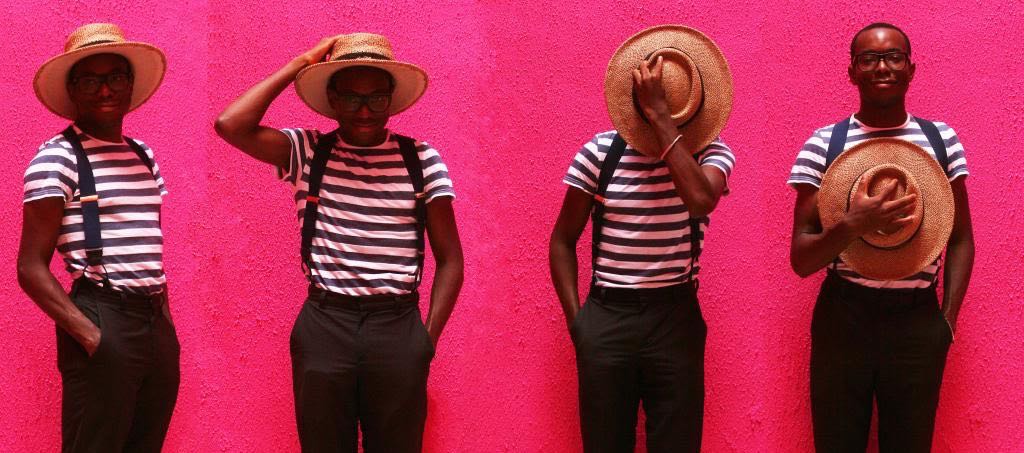Toyosi Faridah Kekere-Ekun’s Induction is poignant and evocative. It’s a ménage of twenty monochrome images, which feature an often nude female model, who is occasionally joined by a less nude male counterpart. Kekere-Ekun describes the collection as her introduction to the realities of existence. This implies a new understanding of the human experience. It is a somewhat personal display as it draws directly from her own experiences, and as such it isn’t surprising that it is literal and obvious in parts. However, these are the very things that give it strength. If the images were completely shrouded in metaphors and allusions, then we would all be lost, interpreting meaning where there was none, and imagining feelings that were not felt during their creation. The fact that they’re presented so bluntly lends them a commonality, and a relatability that many similar art forms lack.
The induction illustrated here is Kekere-Ekun’s journey from adolescence to adulthood. It is the photographic equivalent of a coming of age story on par with J.D Salinger’s Catcher in the Rye. Instead of words to compel you to feel, you have muted tones, tense moments, and pixelated representations of emotion. And they are successful at this. When you look at the images, you do not see one woman’s struggle with life, you see your own. Her work is a blank canvas that you may paint yourself upon, but this is not all that it offers. The images are all stunning. Kekere-Ekun manages to pack a great deal of meaning into each photograph without losing that which makes them aesthetically pleasing and worthy of display in your office or lounge. Furthermore her use of controlled lighting, double exposures and multiple flashes, lends the collection a glimmer of technical mastery that does not go amiss. They completely abase the impression that she’s a pretty little ingénue who’s been allowed to run amok with a camera. Induction puts her firmly in line to succeed, and perhaps one day exceed the masters in her field.
As I mentioned in the first paragraph, the female model used is mostly in the nude. However, it must be said that her nakedness is neither obvious, nor sexual nor vulgar. Rather than offend, her nudity only goes to further illustrate our intrinsic vulnerability as human beings. The progression of the images illustrates a clarity that can only be gained by Kekere-Ekun’s definition of Induction. The story it tells promises no redemption, or relief at the end of an existential crisis, or particularly trying time. It isn’t a fairy tale. Instead of saying, “and they lived happily ever after”, it says, “and life went on, but they lived with a new and perhaps improved understanding of events.” And even though the majority of the events that inspired the exhibition happened in France, while Kekere-Ekun was at the Speos Institute, it remains a Nigerian story and this makes it doubly precious.
At the heart of Induction is a tale of a love that does not last. The image you see above is a part of that narrative. Their relationship has been reduced to a business meeting conducted over an impossibly long table. One party sees the glass as half full, and the other party sees it as half empty - the end is nigh. It is difficult to believe that it is Kekere-Ekun’s first exhibition for it flaunts a discipline that is usually taught by trial and error. The only thing that betrays her youth is the freshness with which she tells the familiar story of the path to adulthood.
Happy days,
Afam
The photographs will be at the Omenka art gallery until the seventh of March. The Omenka art gallery can be found at Number 24 Ikoyi (Modupe Alakija) crescent. They're open between 9am and 6pm on Weekdays, and 10am and 6pm on the Weekend.
Phone number: +2348184553331
Email Address: info@omenkagallery.com
Originally published in the Guardian Life magazine
Happy days,
Afam
The photographs will be at the Omenka art gallery until the seventh of March. The Omenka art gallery can be found at Number 24 Ikoyi (Modupe Alakija) crescent. They're open between 9am and 6pm on Weekdays, and 10am and 6pm on the Weekend.
Phone number: +2348184553331
Email Address: info@omenkagallery.com
Originally published in the Guardian Life magazine










No comments:
Post a Comment